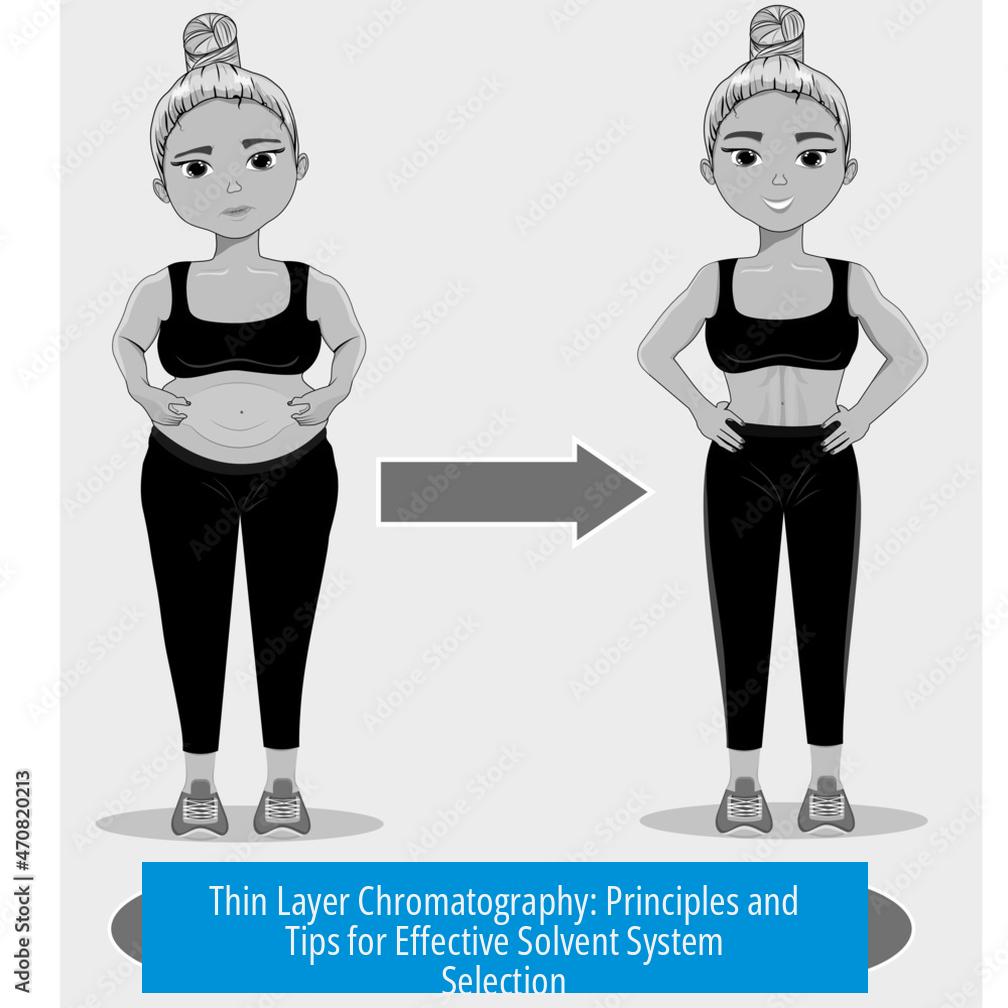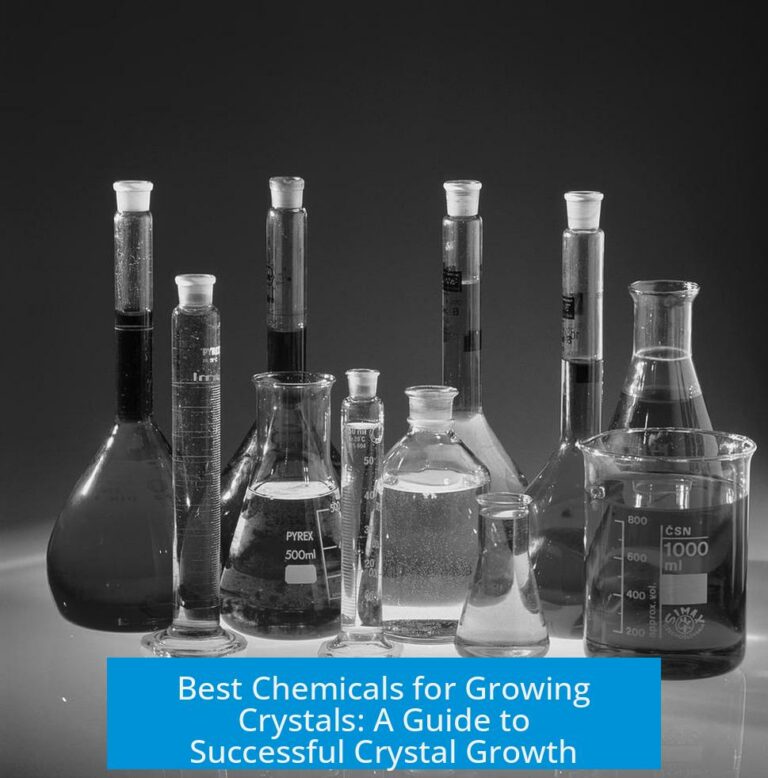Thin Layer Chromatography: Principles and Tips for Choosing a Solvent System for Optimal Separation

Thin Layer Chromatography (TLC) separates compounds based on their polarity and interaction with the stationary phase and solvent system. Selecting an appropriate solvent system is crucial for achieving clear separation of components on the TLC plate.
Principles of TLC Separation
TLC works by applying a sample on a stationary phase, typically silica gel, and allowing a solvent (mobile phase) to move the compounds up the plate. Components separate based on their relative affinities to the stationary phase and solubilities in the mobile phase.
- Use a trial and error approach combined with intuition to find a solvent system that moves compounds sufficiently but distinctly.
- Run multiple developments on the same plate to amplify small differences in retention factors (Rf). Even Rfs around 0.2–0.3 can separate better after repeated runs.
- The solvent polarity should generally match the polarity of the compounds. Nonpolar solvents for nonpolar compounds, and polar solvents for polar compounds.
- Good separation is typically achieved with Rf values between 0.20 and 0.70. Ideal Rfs lie within 0.30 to 0.60, allowing compounds to travel some distance without co-migrating.
- Solvent polarity extremes must be avoided. If compounds do not move from the origin spot, the solvent is too nonpolar. If components run with the solvent front, the solvent is too polar.
- Silica gel is polar and interacts strongly with polar analytes. Hydrocarbon solvents suit nonpolar analytes, while mixtures like hexane/ethyl acetate optimize for intermediate polarity.
- Highly polar solvents rarely apply in silica gel TLC except for reversed-phase TLC, where stationary phases differ.
- Other solid phases (e.g., alumina) offer different separation profiles and should not be overlooked.
- The solvent system alters order of spot migration. Different solvents can invert the typical order of compounds on the plate.
Hints for Choosing a Solvent System
Choosing a solvent system depends on compound polarity, functional groups, and desired resolution. The process involves systematic solvent variation and observation.
- Start with common mixtures such as 1:10 ethyl acetate to petroleum ether (hexane). If spots remain at baseline, increase the polarity ratio, e.g., 3:1 EtOAc:hexane.
- If no movement occurs, try pure dichloromethane (DCM), then progressively add polar solvents like methanol (MeOH) to DCM (e.g., 1:30 MeOH:DCM).
- For compounds with exchangeable protons, include small amounts of protic solvents with similar pKa to promote movement.
- Compounds containing basic nitrogens benefit from using an ammonia-in-methanol solution mixed with DCM to neutralize interactions and increase mobility.
- Explore solvent combinations freely: 20% MeOH in EtOAc, mixtures of EtOAc, isopropanol (iPrOH), and ammonia, or toluene in cyclohexane with acetic acid are all valid options.
- Adjust solvent polarity incrementally by adding methanol to increase polarity or hydrocarbons to decrease it. Ethyl acetate often serves as a key co-eluent in mixtures.
- Use educated guesswork combined with trial runs. Starting with pure DCM generally provides a good baseline for many compounds.
- Remain flexible and permissive; any solvent system that achieves separation is acceptable.
Additional Practical Tips
- Use p-Anisaldehyde staining to detect spots and differentiate products by color. This helps even when compounds have similar Rfs, reducing the need for perfect solvent selection.
- Remember TLC is a tool for guidance, not an absolute measure. If a solvent system barely moves compounds, small-scale column chromatography with that solvent can still isolate pure fractions.
- Solvent and TLC choices involve empirical testing and some subjectivity. Patience and experimentation are part of the process.
Summary Table: Solvent Properties and Application in TLC
| Solvent or Mixture | Polarity Level | Common Uses | Typical Effect |
|---|---|---|---|
| Hexane / Petroleum ether | Nonpolar | Nonpolar hydrocarbons | Slow migration of polar compounds; moves nonpolar compounds |
| Ethyl acetate (EtOAc) | Moderately polar | Intermediate polarity compounds | Increases mobility of polar compounds |
| Dichloromethane (DCM) | Medium polarity | General-purpose solvent | Good starting point; moderate migration |
| Methanol (MeOH) | Polar protic | Polar compounds with exchangeable protons | Strongly increases polarity; promotes compound movement |
| Ammonia in methanol + DCM | Polar_basic | Basic nitrogen-containing compounds | Prevents tailing; enhances migration |
Key Takeaways
- Match solvent polarity to compound polarity for effective separation.
- Seek Rf values between 0.20 and 0.70 for clear resolution.
- Use trial and error starting from common solvents like hexane/ethyl acetate or pure DCM.
- Modify solvent mixtures by adding polar or nonpolar components to fine-tune movement.
- Include protic solvents or ammonia solutions for specific functional groups.
- Apply multiple TLC runs to enhance separation of closely related compounds.
- Utilize stains like p-Anisaldehyde for spot visualization and differentiation.
- TLC guides purification but is not absolute; column chromatography can work even if TLC results are imperfect.
What Rf values indicate good separation in TLC?
Good separation usually happens when Rf values are between 0.20 and 0.70. Ideal Rf values fall within 0.30 to 0.60 to allow clear distinction between compounds.
How do I choose a solvent system based on compound polarity?
Match the solvent polarity to your compound’s polarity. Use nonpolar solvents for nonpolar compounds and polar solvents for polar ones. Adjust polarity stepwise to find the best mix.
Why perform multiple development runs on the same TLC plate?
Running the same plate multiple times can amplify small differences in compound migration. This helps reveal subtle separations that might not appear in a single run.
What should I consider when using silica gel plates for TLC?
Silica gel is polar, so nonpolar compounds move less. Hydrocarbons develop with hydrocarbon solvents. Polar compound mixtures often need solvent blends like hexane and ethyl acetate. Avoid highly polar solvents unless doing reverse-phase TLC.
How can I adjust solvent systems for compounds with special functional groups?
Use protic solvents if your compound has exchangeable protons. For basic nitrogens, add ammonia in methanol with DCM. Modify co-eluent compositions to tweak polarity and interactions.





Leave a Comment